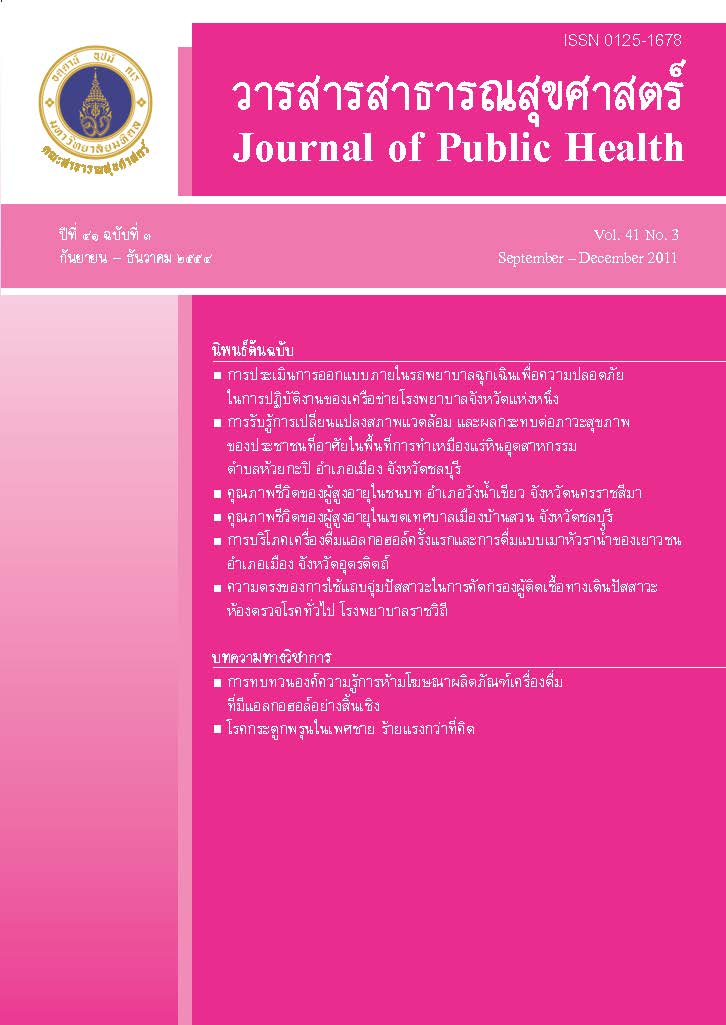เชื้อสแตฟฟิโลคอกคัสออเรียสและเชื้อชนิดที่ดื้อยาเมทธิซิลลิน ในผู้ป่วยนอกที่ติดเชื้อผิวหนังและเนื้อเยื่อของโรงพยาบาลประจวบคีรีขันธ์ หัวหิน และปราณบุรี
Keywords:
S. aureus, Methicillin-Resistant Staphylococcus aureus (MRSA), skin and soft tissue infections, การติดเชื้อของผิวหนัง, เนื้อเยื่อAbstract
ABSTRACT
This was a cross sectional study designed to determine the prevalence of Staphylococcus aureus and Methicillin-Resistant- Staphylococcus aureus (MRSA) among outpatients with skin and soft tissue infections at three hospitals in Prachuapkhirikhan Province: Prachuapkhirikhun General, Hua Hin and Pranburi Hospitals and to determine factors related to the transmission of S. aureus. S. aureus were identified and tested for antimicrobial susceptibility by the disc diffusion method. Data were collected by self-administered questionnaires from July 2008 to June, 2009. Statistical analyses used were percentage, mean and Pearson’s chi-square.
Out of a total 405 outpatients with skin and soft tissue infections, 65.7% were found to be men and 34.3% were women. The prevalence of S. aureus infection was 37%. Among these 11 patients (7.3%) were found to have MRSA infection. The only factor found to be related to staphylococcal infection was the sharing of personal items with others (p = 0.022). The other factors, such as other general characteristics, clinical presentations, lifestyles of the study patients, personal hygiene behavior and past history background were not related to staphylococcal infection. The strains of MRSA in this study were found to resist to oxacillin, penicillin, and cefoxitin, but susceptible to vancomycin. The study suggests that providing knowledge on the avoidance of close contact and the sharing personal belongings could prevent staphylococcal infections, especially among health personnel who taking care of patients with skin and soft tissue infections.
Key words: S. aureus, Methicillin-Resistant Staphylococcus aureus (MRSA), skin and soft tissue infections
Downloads
Issue
Section
License
Creative Commons License CC-BY-ND


